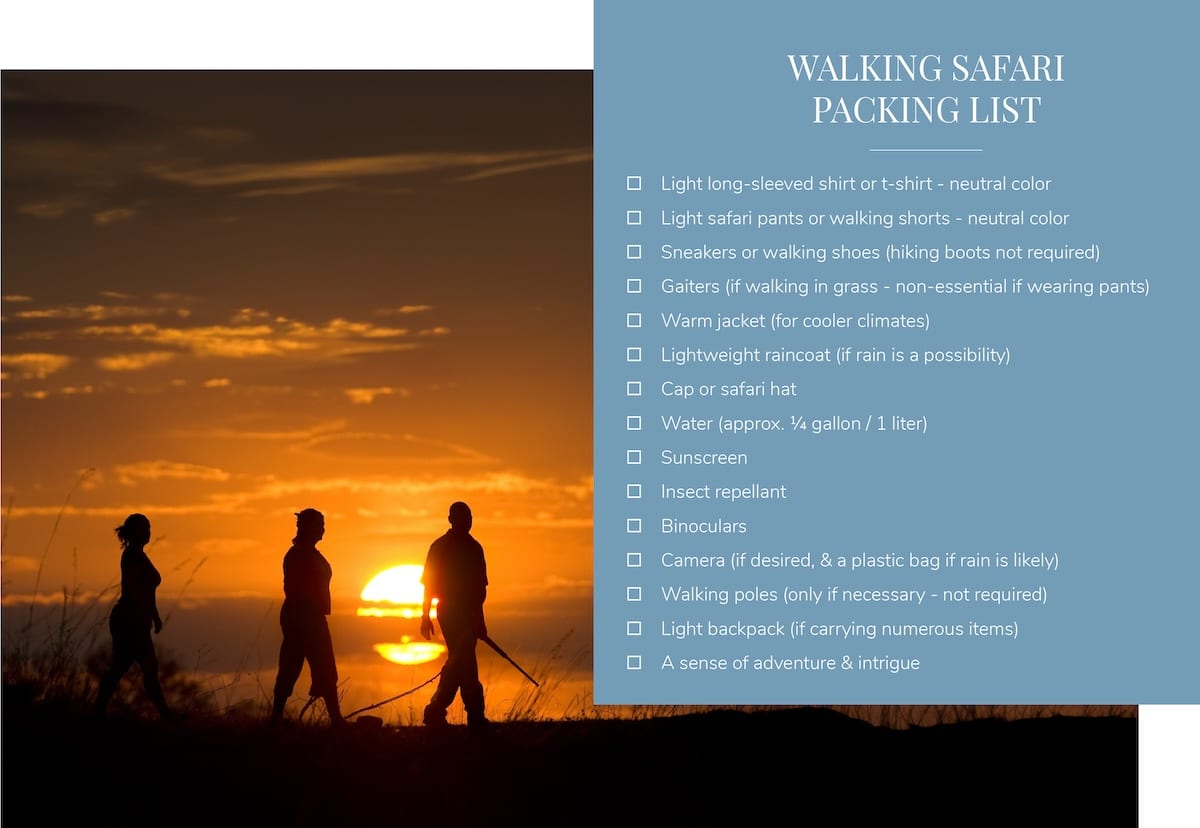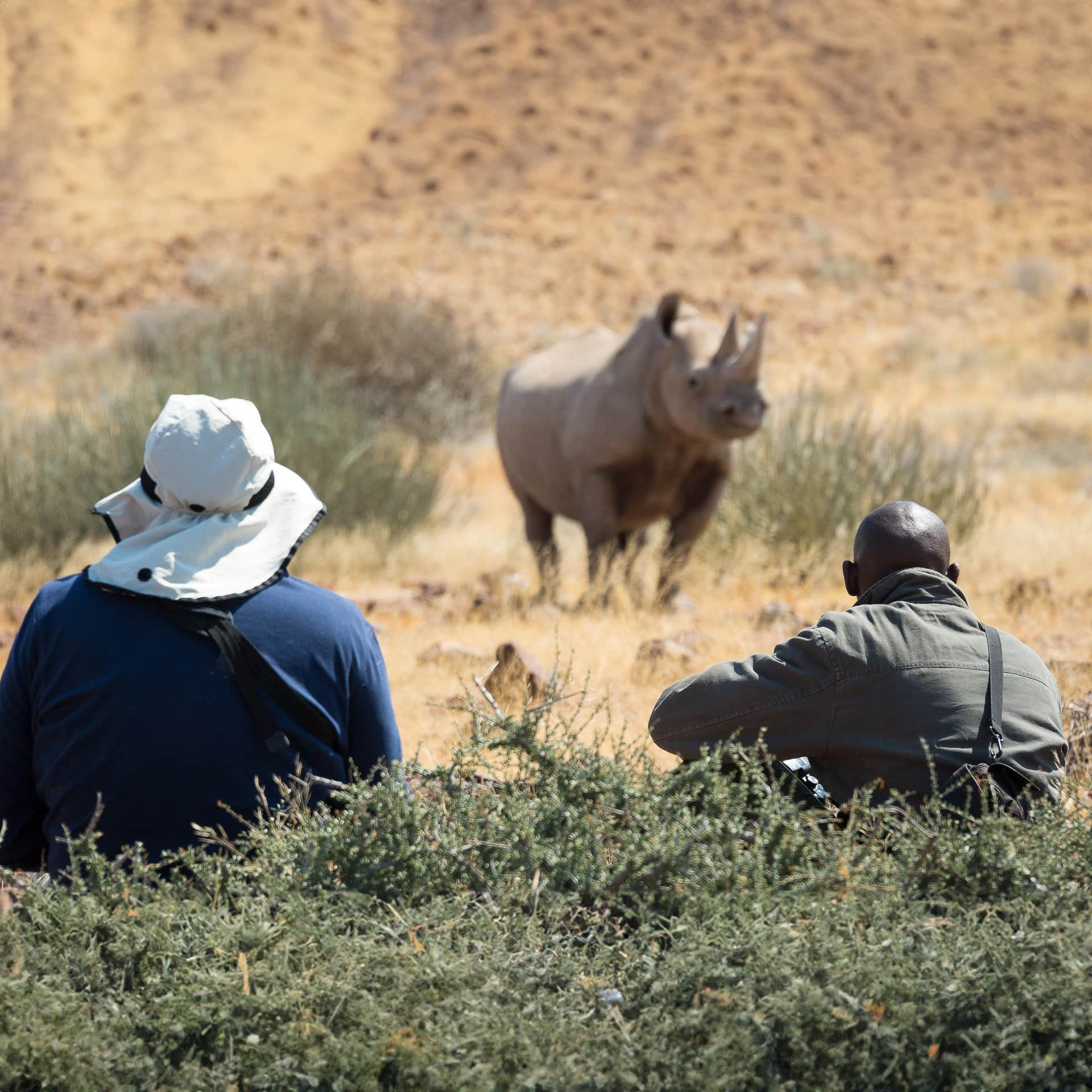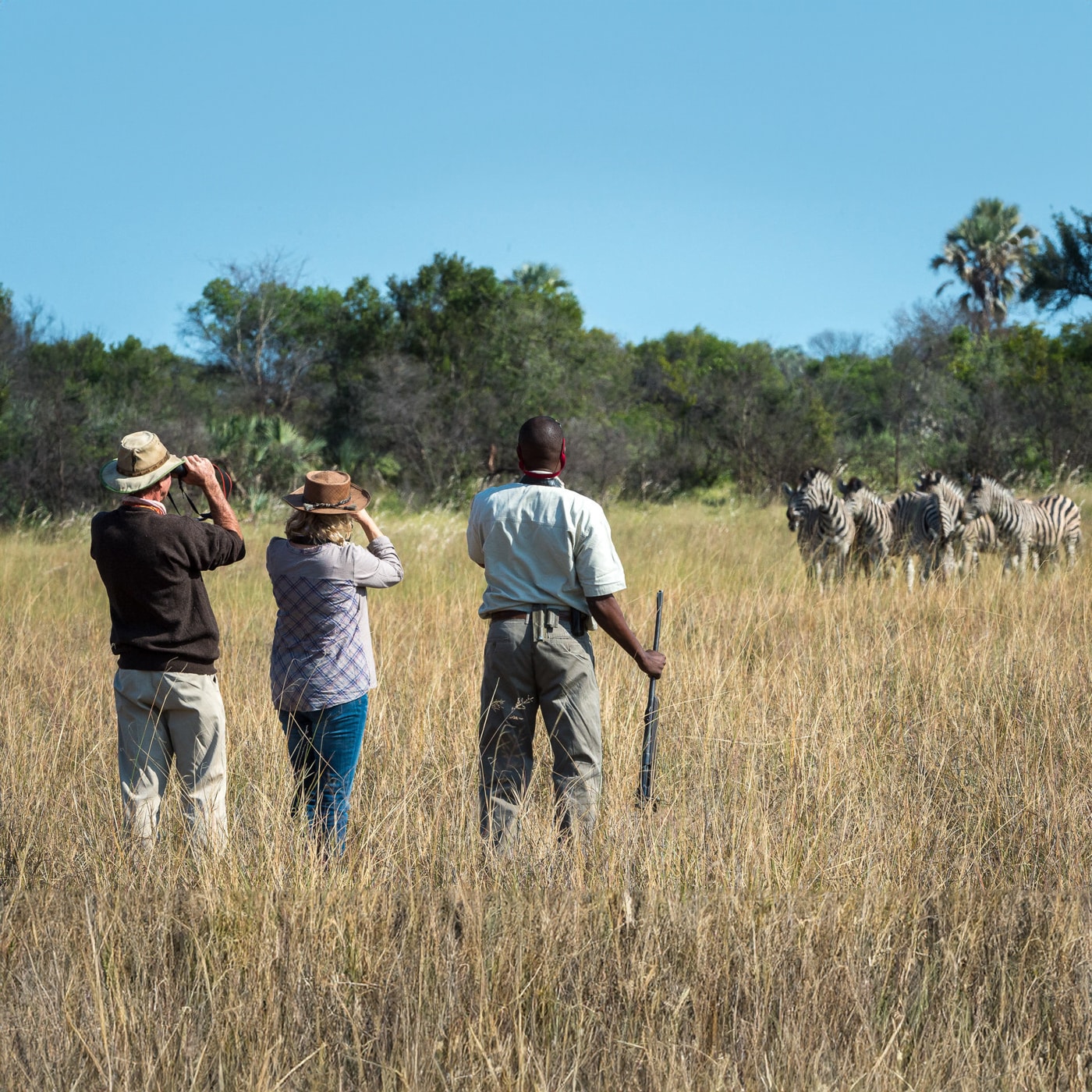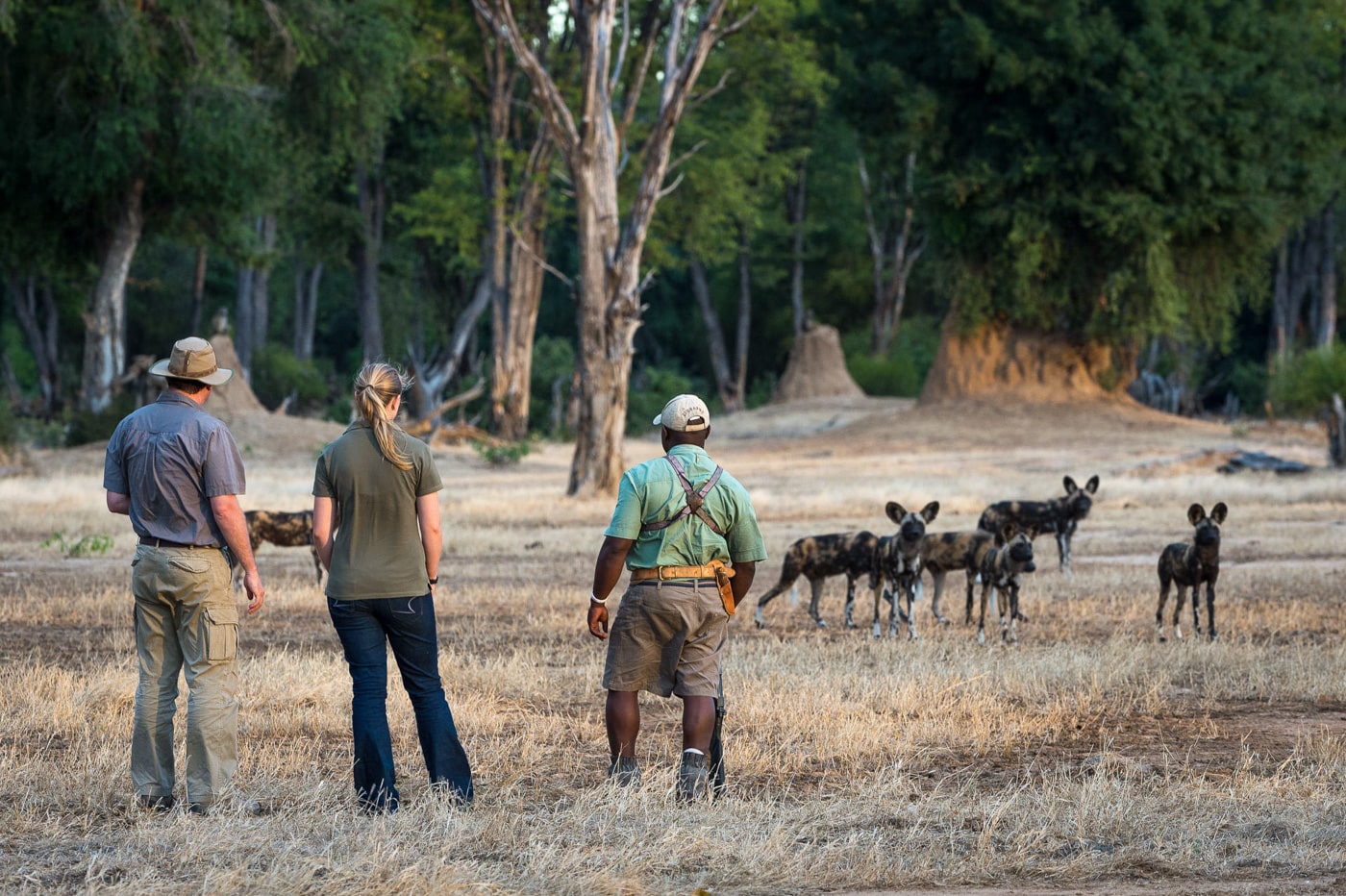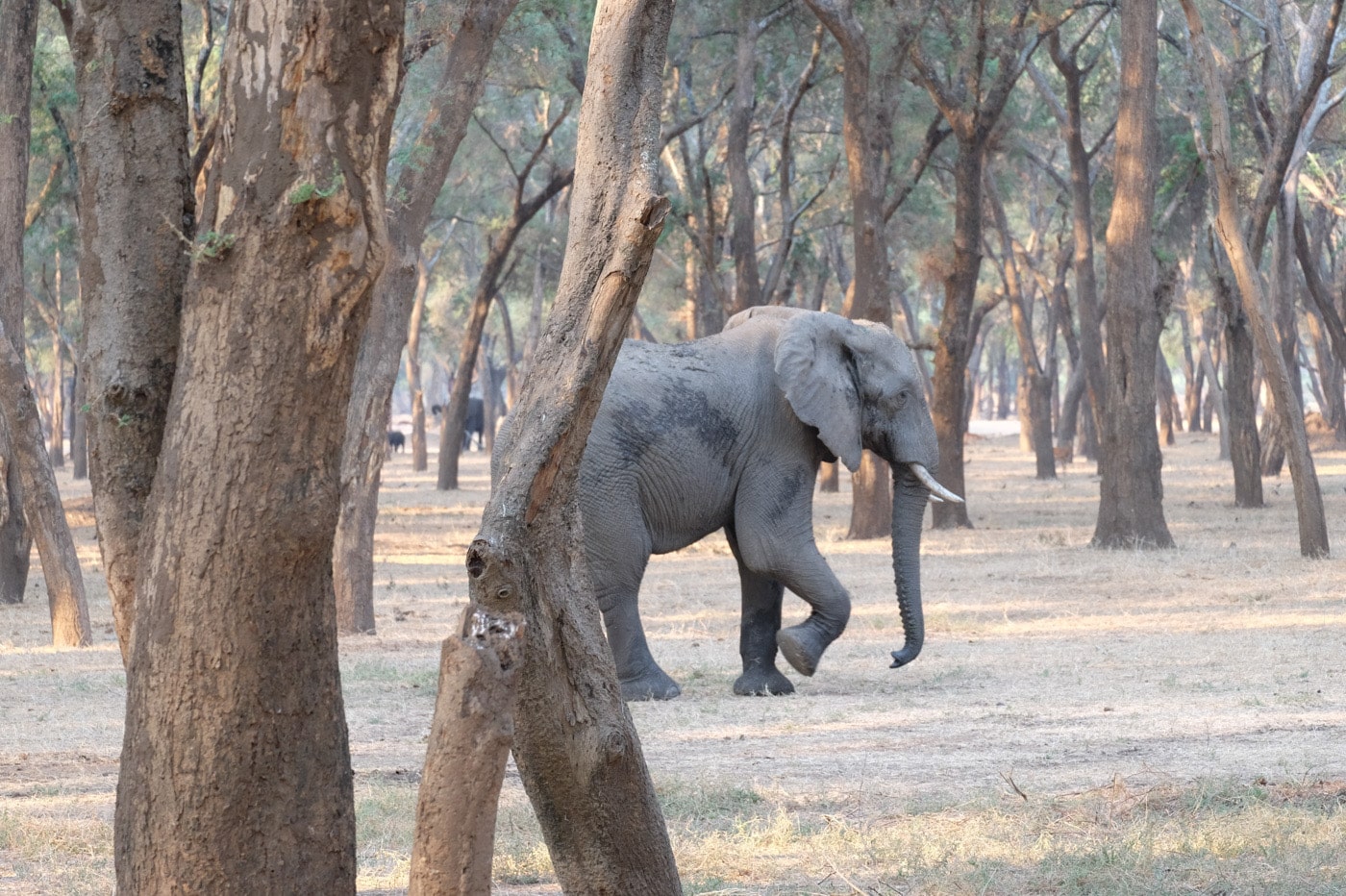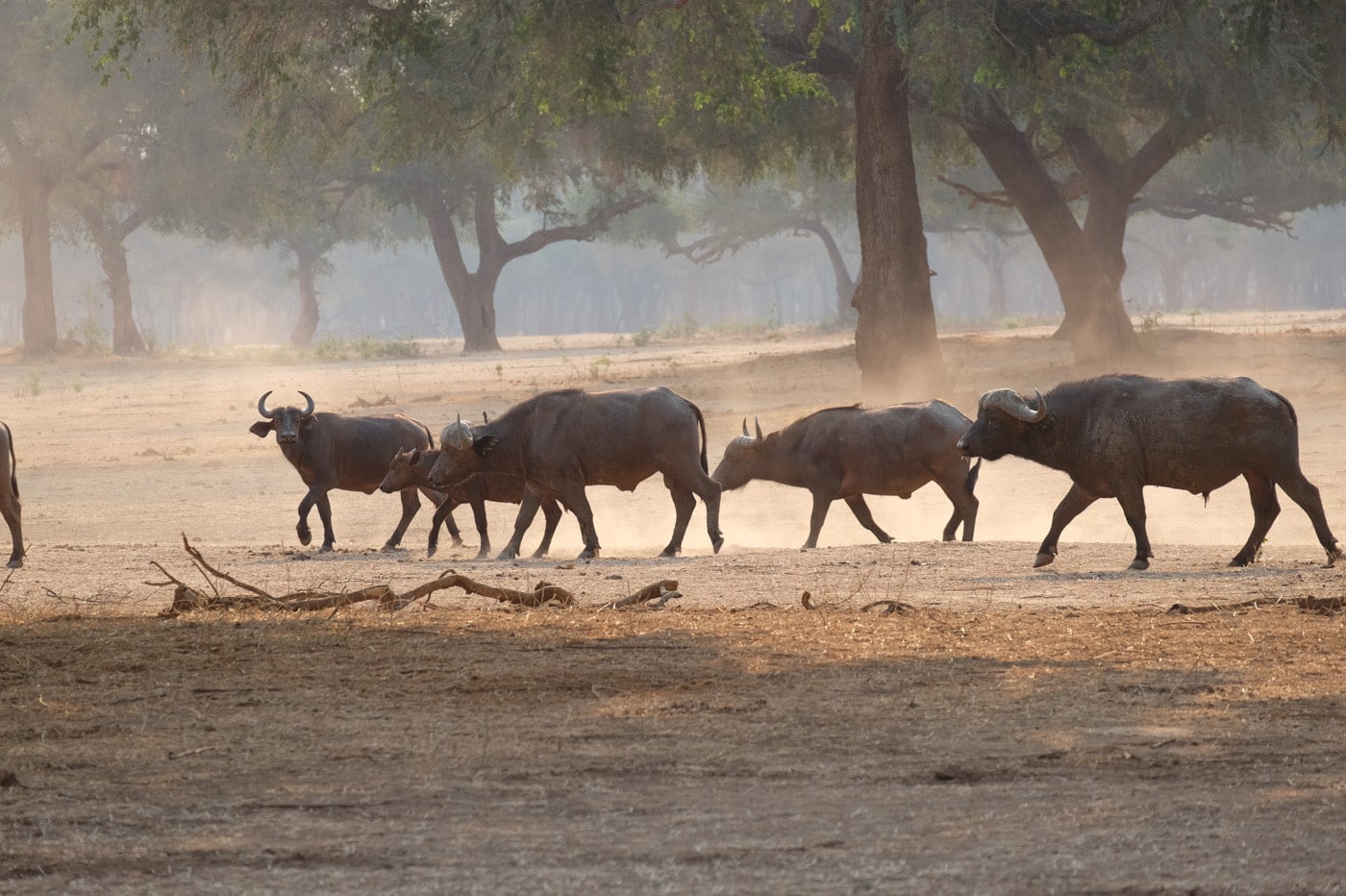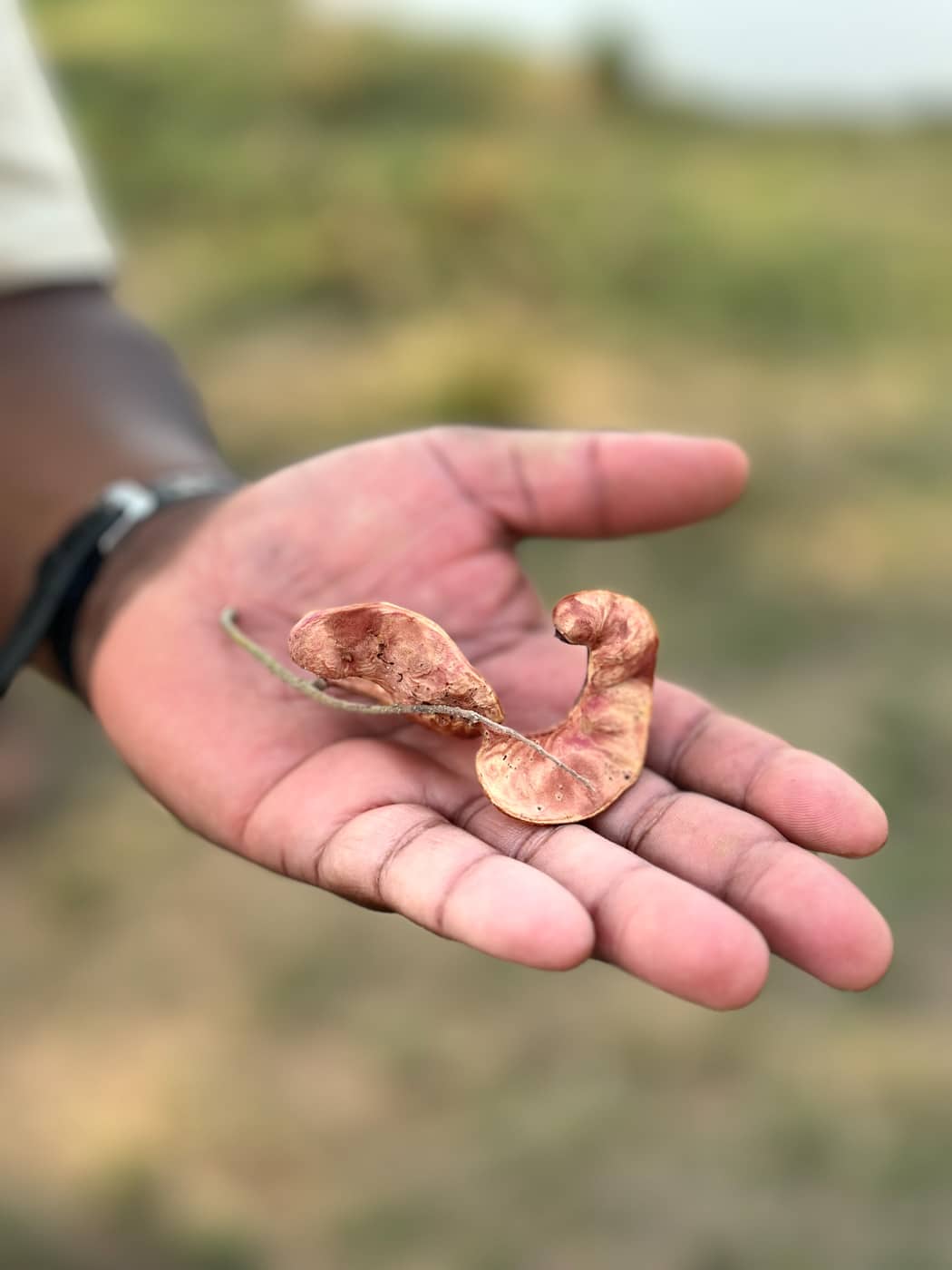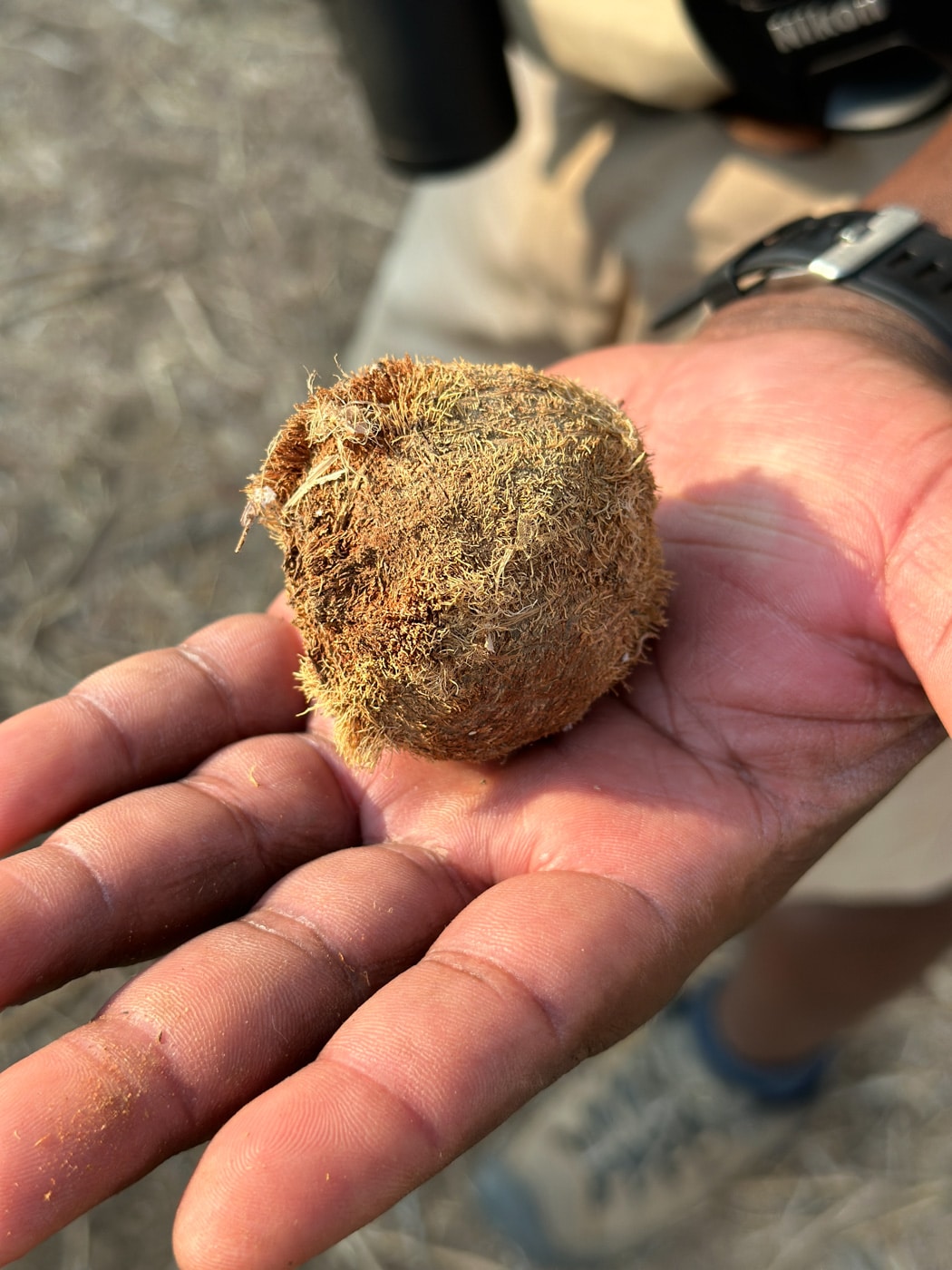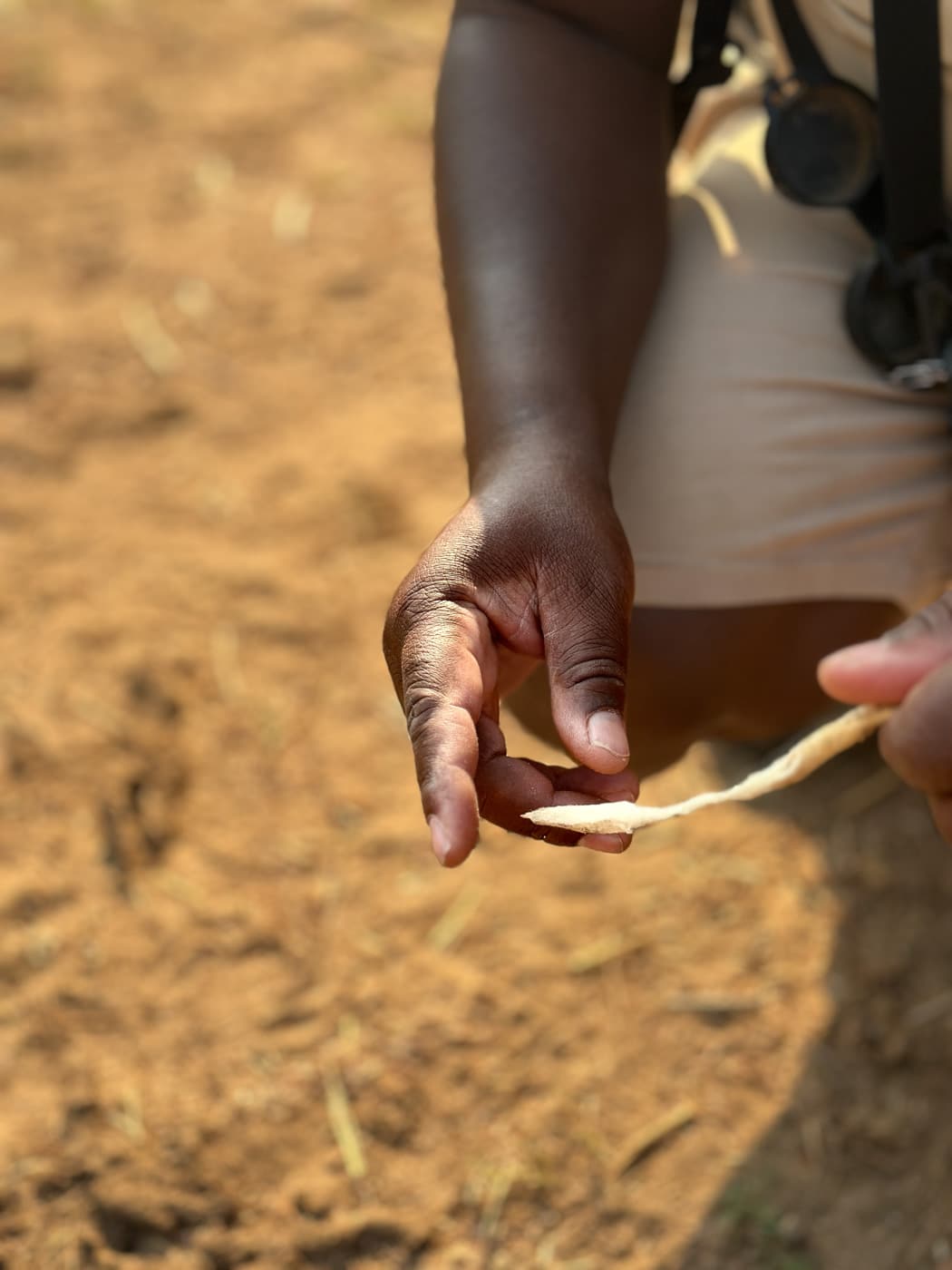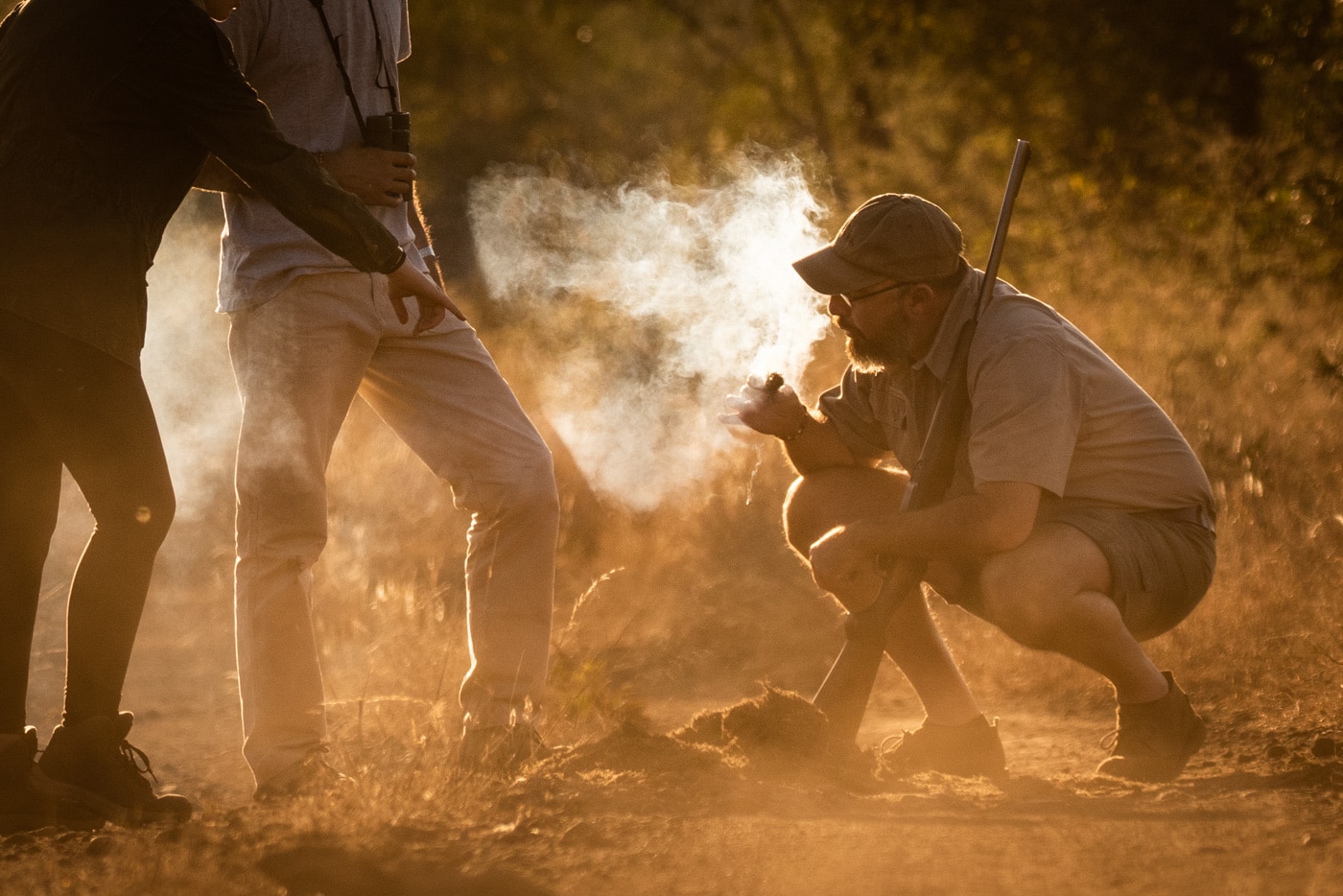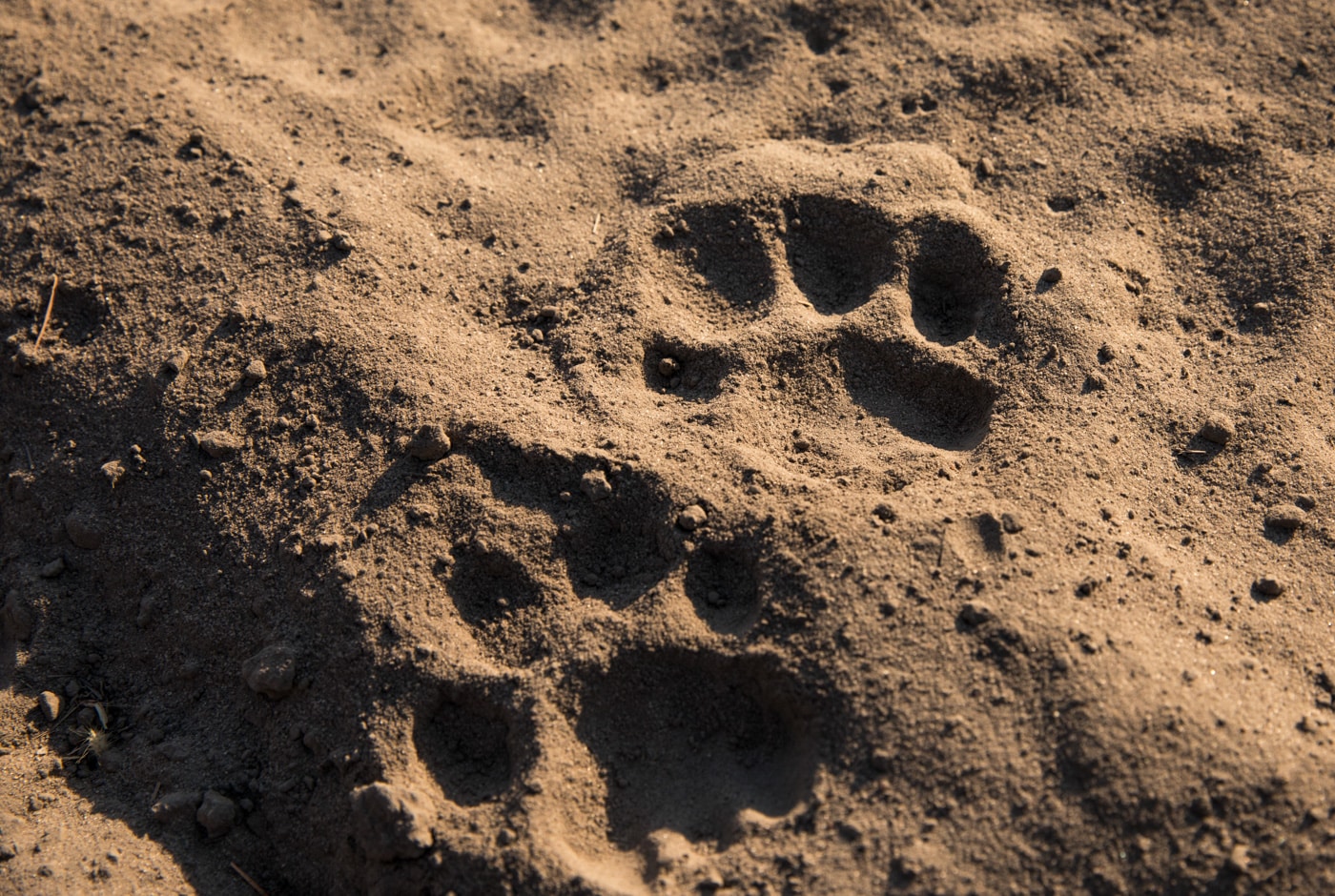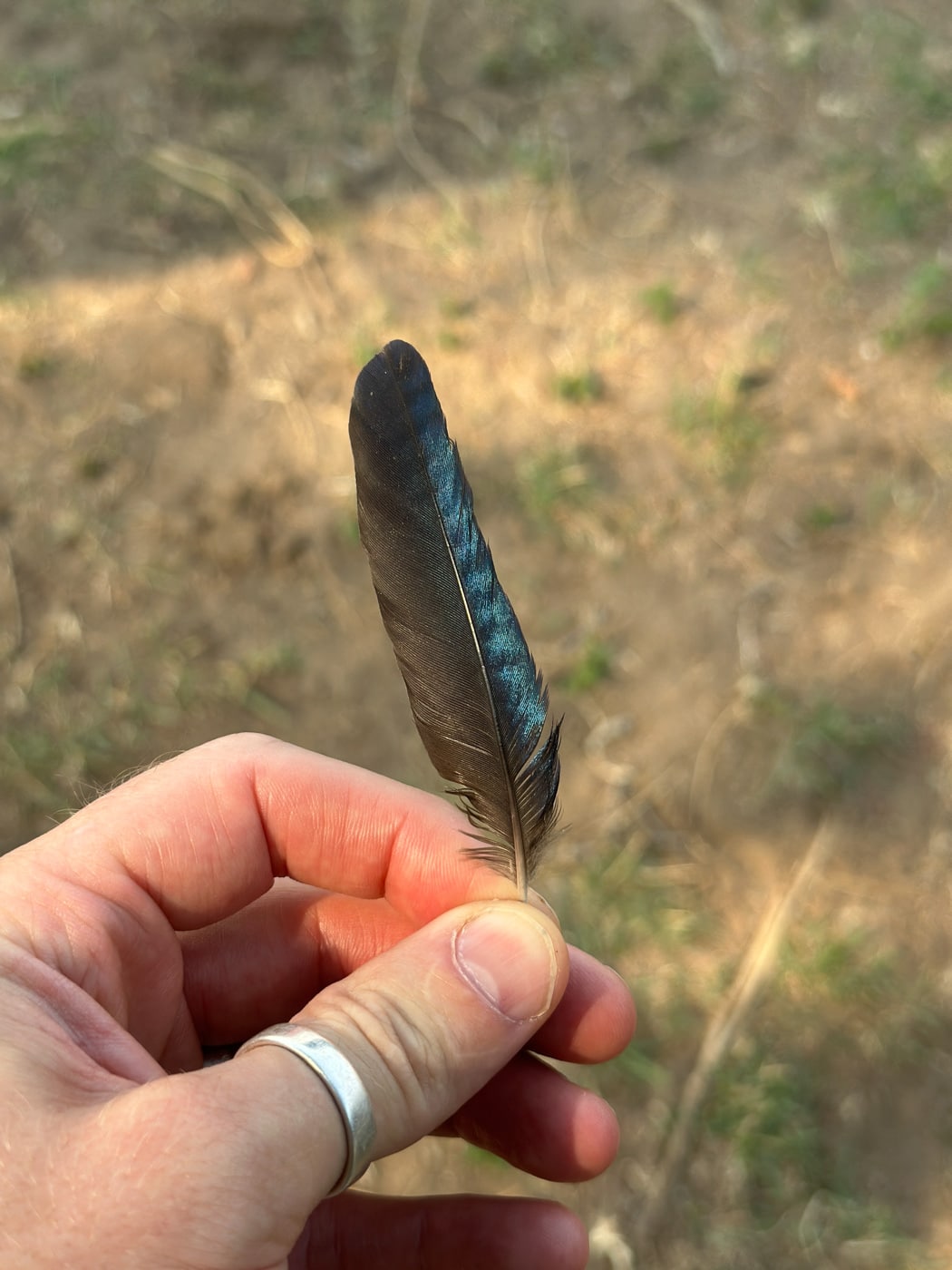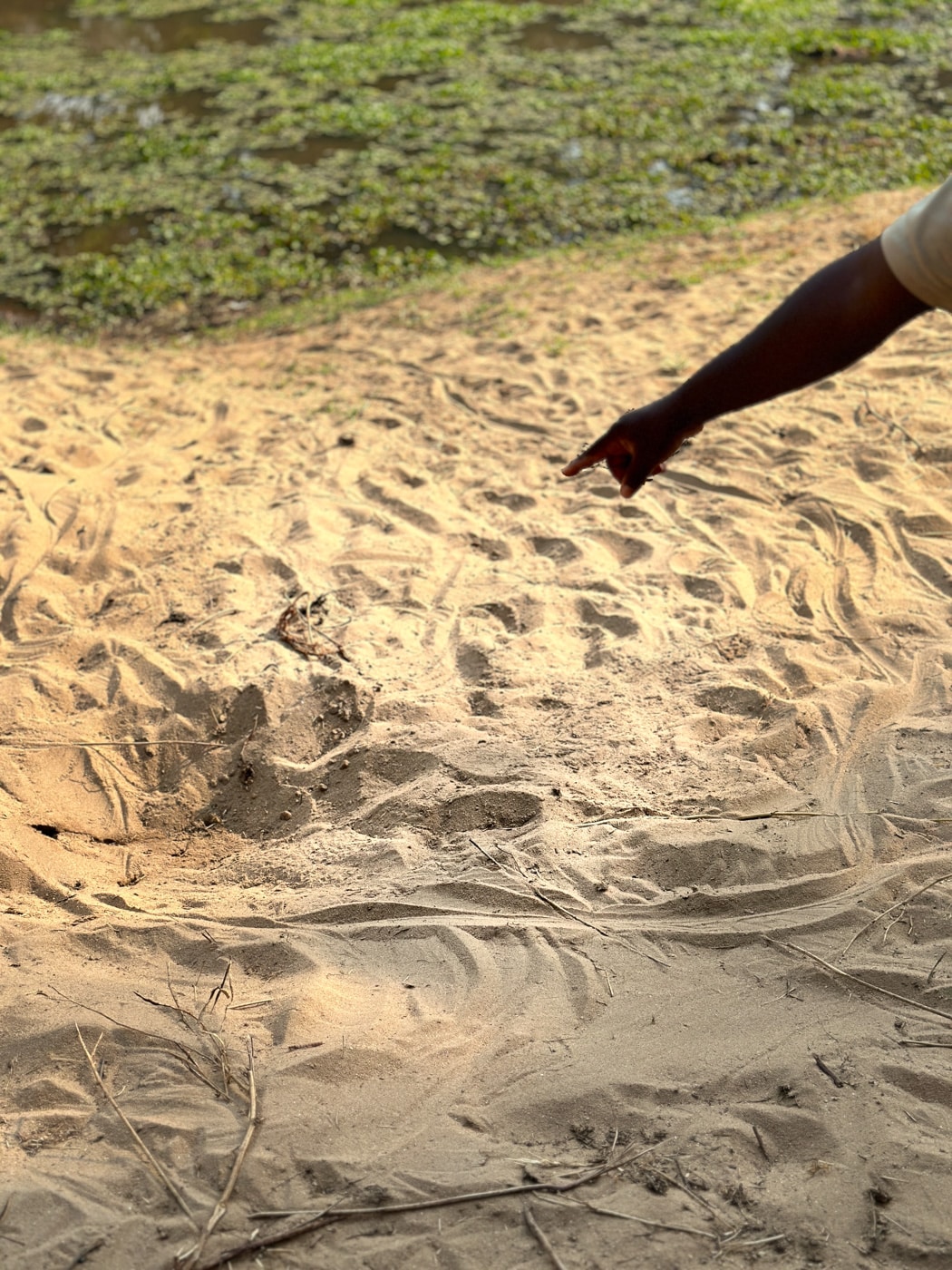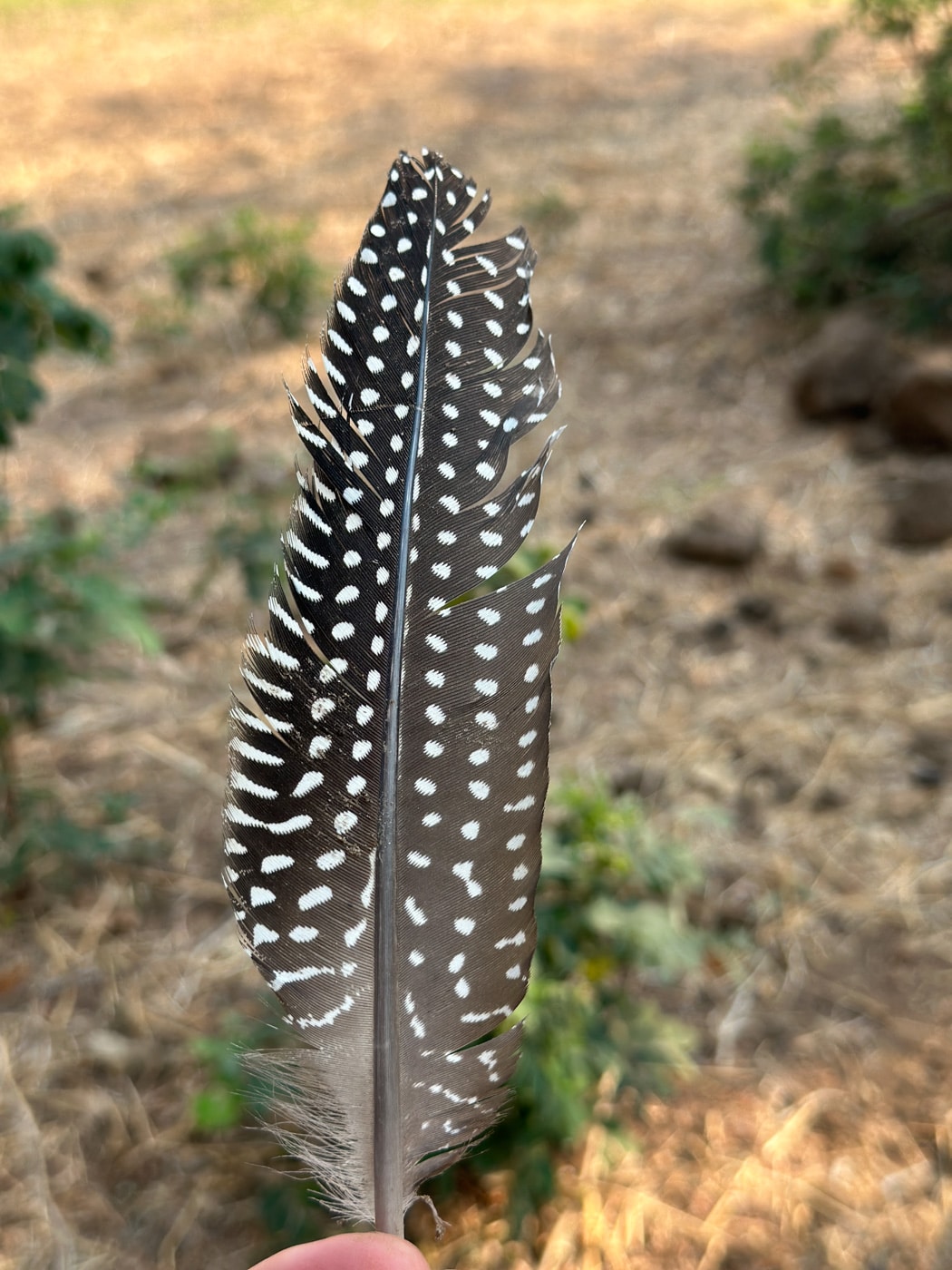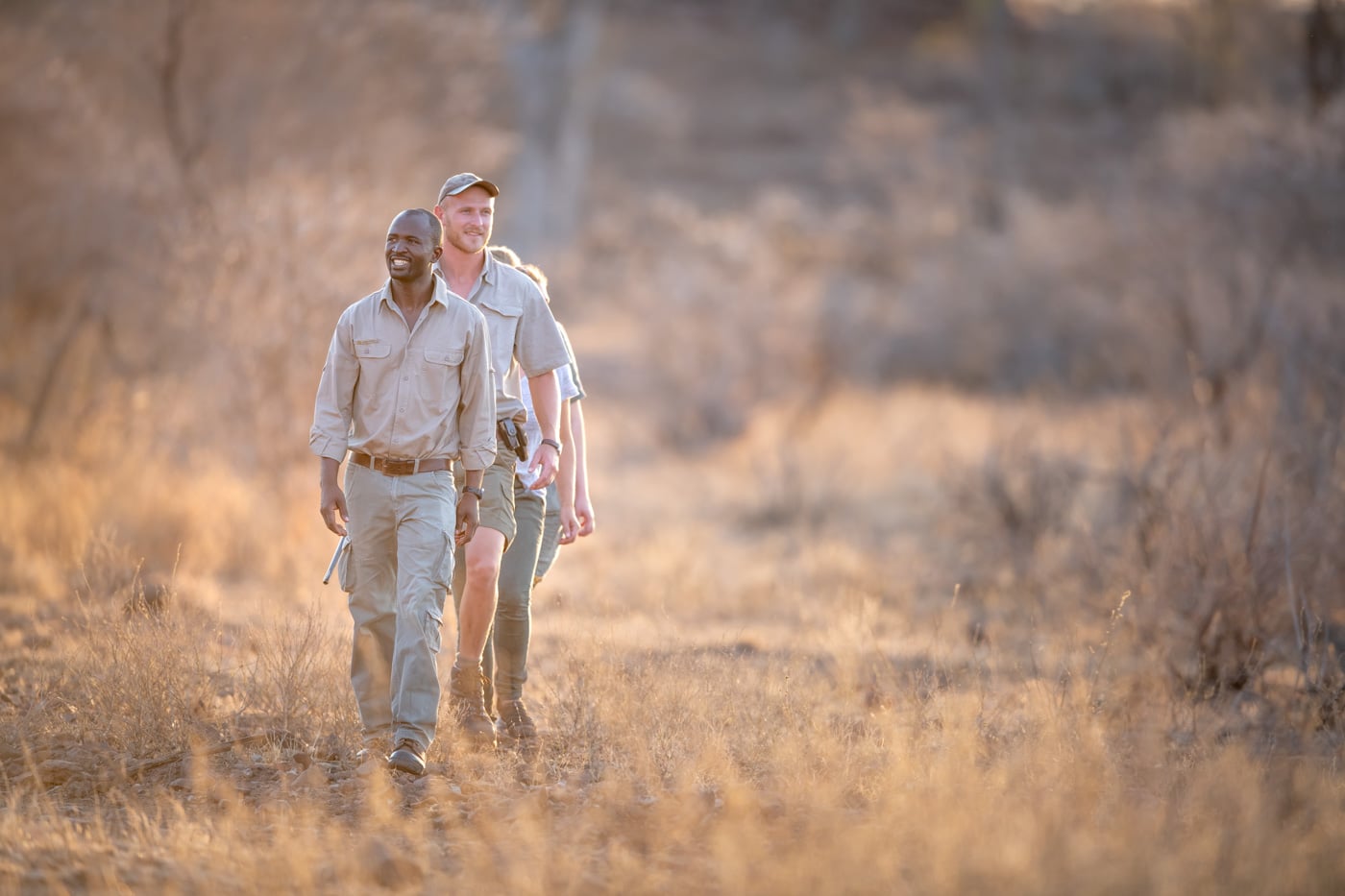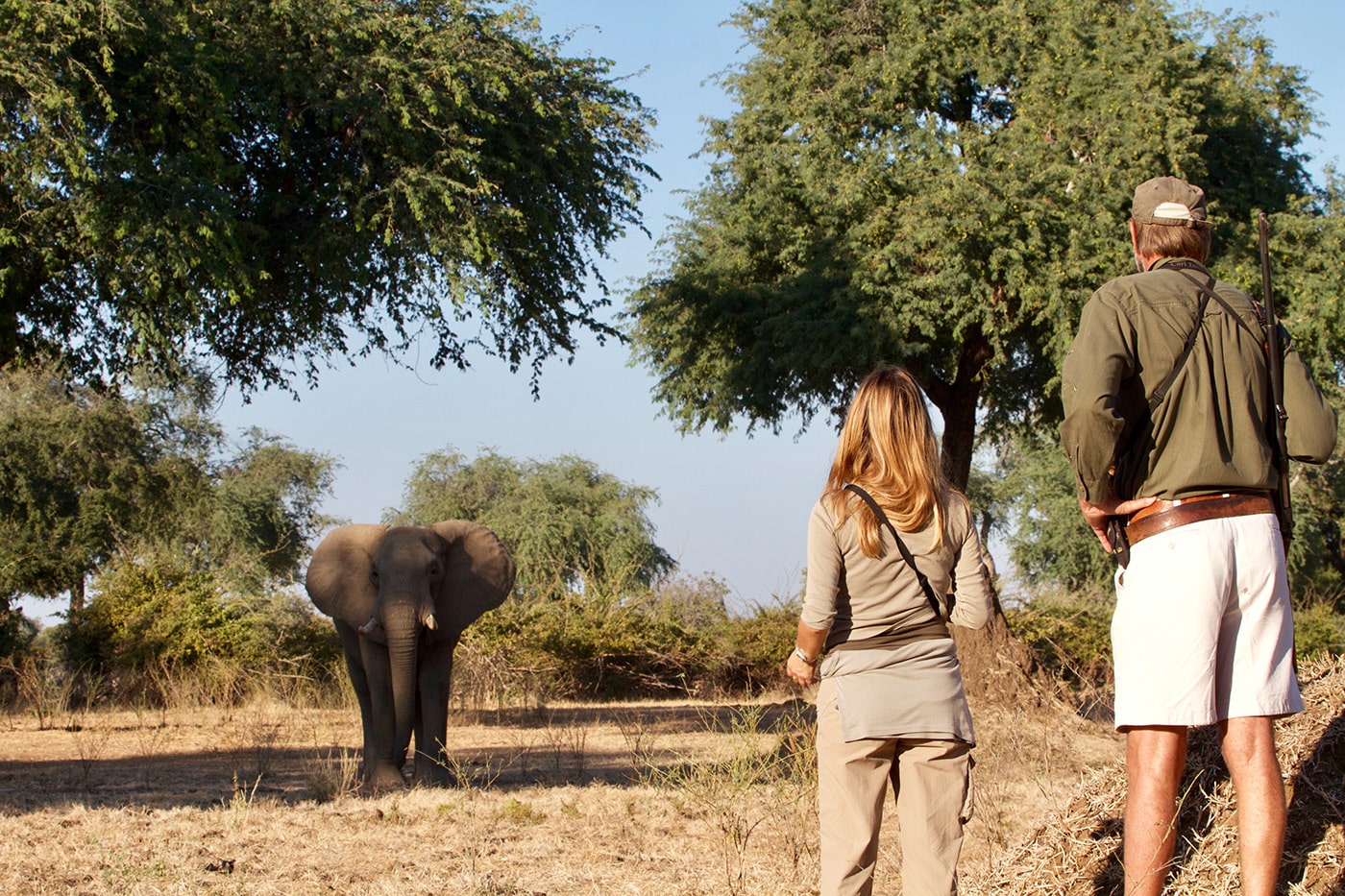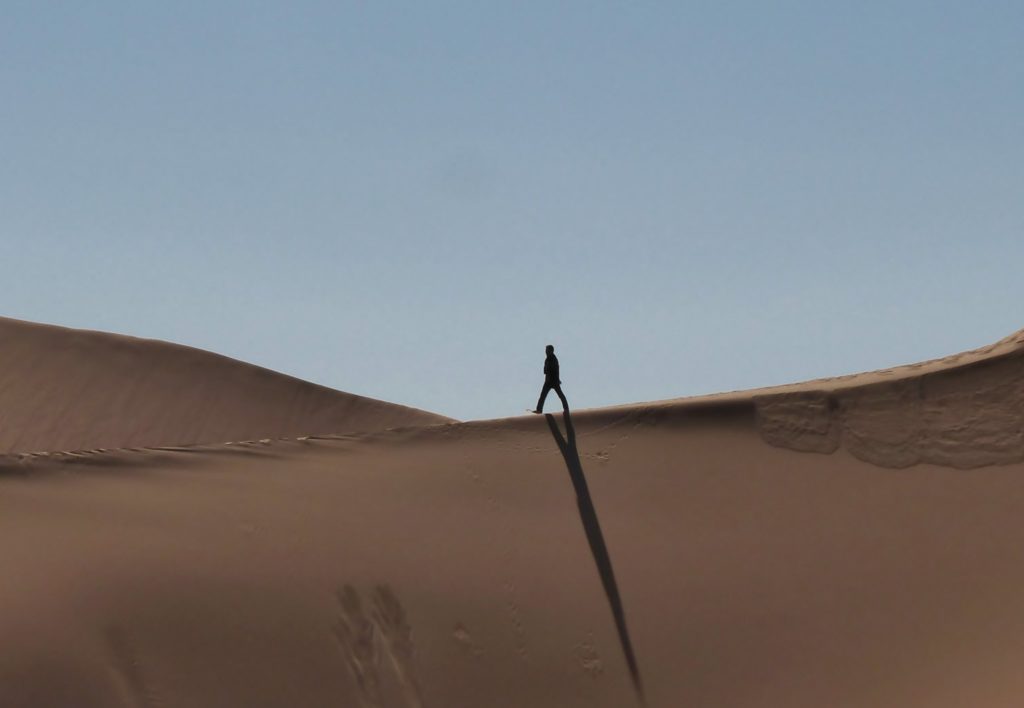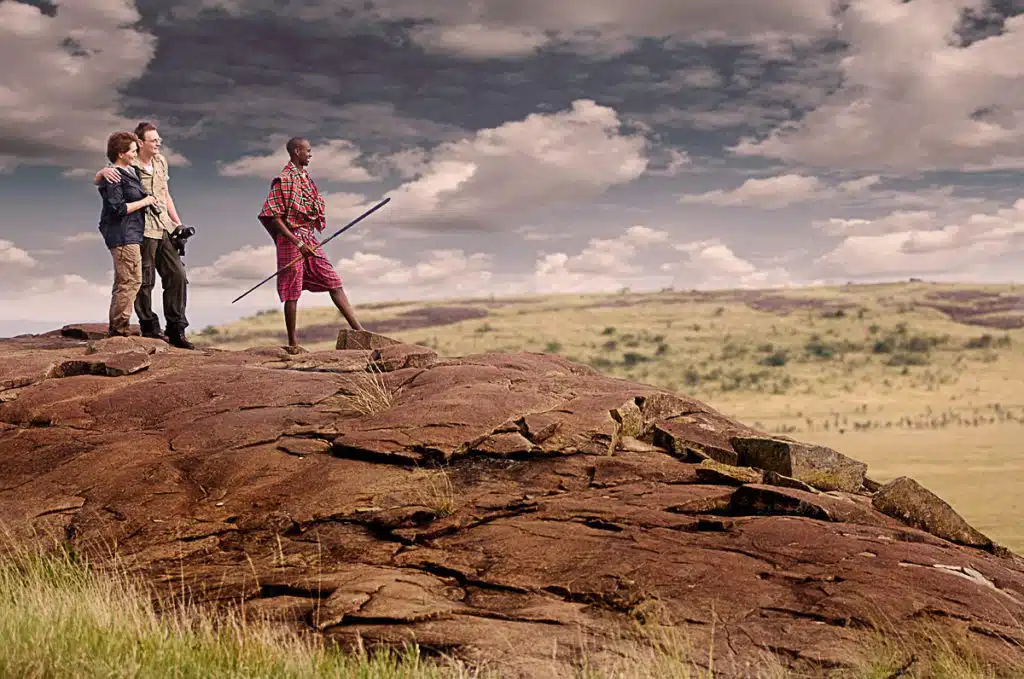AN AFRICAN WALKING SAFARI
Discovering the Little Things
African walking safaris take a step into the unknown.
Though not every destination is able to offer safaris on foot due to varying country and national park policies, there are select locations in which visitors can venture into the wilderness without the use of a game vehicle.
It can be quite daunting dismounting from the sturdy safety of a game vehicle and setting out on a walking safari, especially if you have already driven the area and seen its less than placid inhabitants. Relinquishing the security of a vehicle in a region that is home to lion, leopard, elephant and hippo can sometimes deter visitors from indulging in this fascinating and inspiring experience, but it is a lack of understanding rather than a justified sense of self-preservation that initiates this concern.
Safari guides undergo extensive training, and additional qualifications exist solely for African walking safaris, and stringent guidelines, extensive measures and every camp and lodge’s ardent wish to not lose any guests ensures that your safety is of the paramount importance. Walking groups are sometimes accompanied by an armed park ranger as a precaution. However, walks are specifically designed and orchestrated to be non-intrusive to native wildlife and interactions are avoided at all costs.
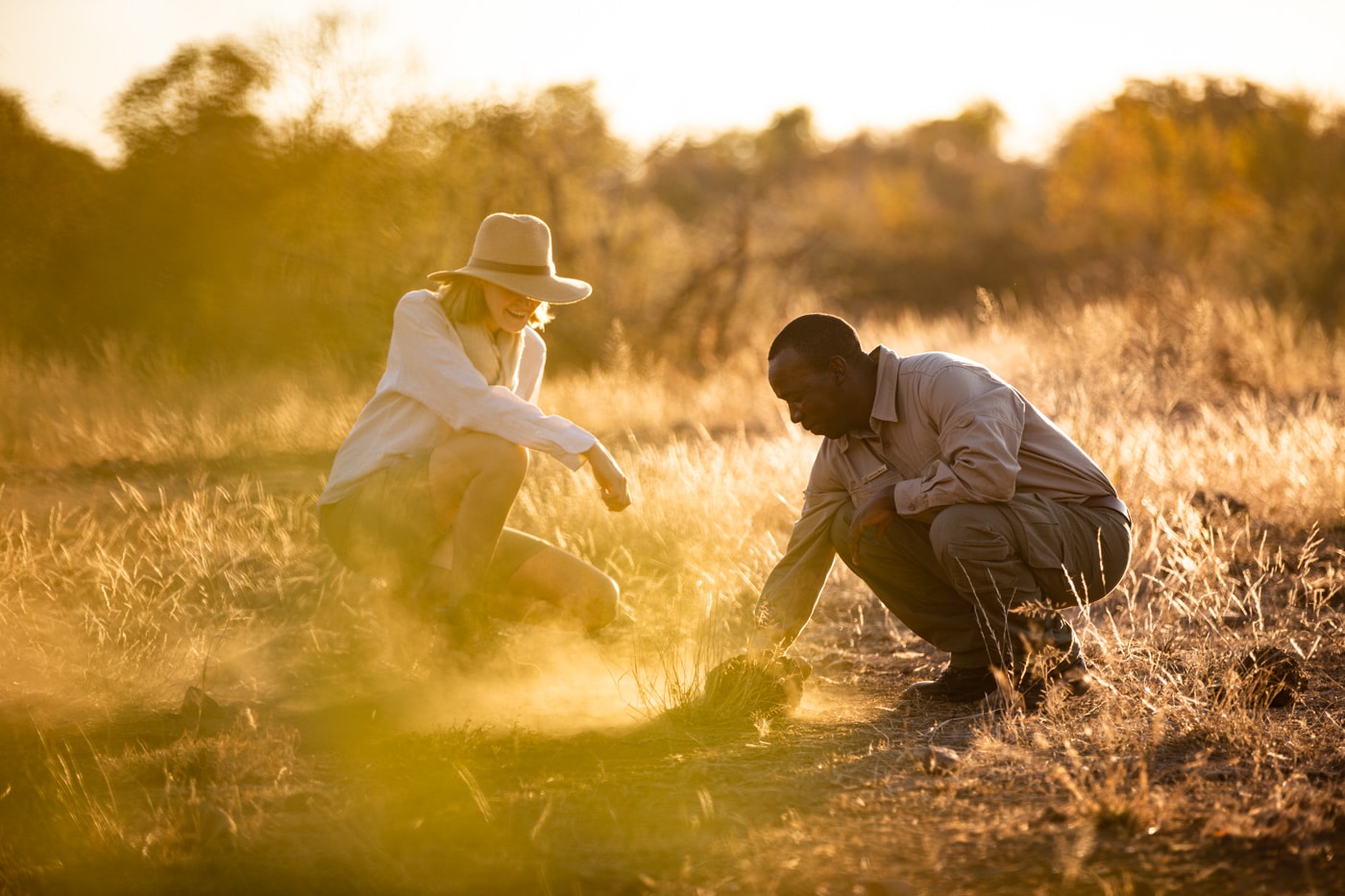
So what does a walking safari entail? These are some of the key factors of an African walking safari:
- Why Take a Walking Safari?
- Location of a Walking Safari
- Best Walking Safari Destinations
- Walking Safari Guides & Rangers
- What to Expect on an African Walking Safari
- What to Pack on an African Walking Safari
WHY TAKE A WALKING SAFARI?
Game drives offer spectacular wildlife viewing, especially of larger, and potentially more dangerous, animals. However, there is a great deal that can be missed, and the finite details of the bush hold a vast amount of intrigue. If you tend to be more active in your daily life, spending numerous days in a game vehicle can leave you with itchy feet and a yearning for a little exercise. An African walking safari is a wonderful opportunity to stretch your legs, even if on a shorter, more leisurely adventure, though may not be available spontaneously. It is always advised to discuss your wishes with your Travel Designer prior to departure to ensure that a guide will be available for you.
Photos: Wilderness Safaris
Though equally as fascinating at any time, taking a walking safari earlier in your itinerary will enrich subsequent game drives, giving you a deeper understanding of the sights, sounds and signs around you. It is an opportunity to gain an education in animal habits and marks, and will uncover the tales of the bush, leading to more rewarding game drives and other experiences. Walking safaris also allow you to assimilate with the world around you, immersing you completely in the landscape.
LOCATION OF A WALKING SAFARI
With twice-daily game drives occurring at most lodges, two or more vehicles venturing out for each, and guides from other lodges and camps in constant communication, the daily activities of the bush are well known to walking safari guides prior to departure.
The movements of carnivores, the whereabouts of large herds of elephant and any buffalo that have yet to return to the diurnal sanctuary of lakes and rivers is communicated amongst staff by two-way radio. This gives an African walking safari guide a clear picture of the surrounding area in real time. This way, they are able to select a route that will provide plenty of intrigue and – if desired by the client – some exciting animal sightings, but without any surprises and with ample distance given to any potentially dangerous animals.
The chosen route is planned through an area of optimal visibility, the vigilant guide being able to see wildlife from a distance and advise the guide accordingly. This is more than enough time and space to take any precautions necessary while still offering views of larger game.
In some instances, guests will be driven to a designated starting point, walking for a predetermined distance, based on client fitness and enthusiasm, to then meet the vehicle for a bush coffee and snacks at the walk’s conclusion. Walking safaris do differ from camp to camp and country to country. At some, you may undertake a more circuitous route, starting and finishing at the same location, be that your camp or a game vehicle, and the disparity of ecosystems throughout Africa will determine what may be found and the nature of the terrain.
BEST WALKING SAFARI DESTINATIONS
- South Luangwa National Park & Lower Zambezi, Zambia
- Mana Pools, Zimbabwe
- Samburu & Laikipia, Kenya
- Kruger Reserves, South Africa
- Sossusvlei, Namibia
- Tarangire National Park, Tanzania
- Okavango Delta, Botswana
- Uganda & Rwanda for gorilla trekking
WALKING SAFARI GUIDES & RANGERS
As mentioned, African walking safaris are often accompanied by both a guide and an armed ranger. Though a ranger isn’t always required, it is their responsibility to ensure safety. For that reason, it is usually suggested that, while he will be introduced, guests do not distract him and direct all questions to their guide.
Conservation-minded guests are often alarmed at the presence of a ranger wielding a powerful rifle, but the safety of nature is almost as imperative as that of his guests. Expertly trained and keenly conscious of the animals’ welfare, a ranger will do all he can to first avoid and then deter the approach of any larger game. Only in the most extreme of situations will he raise his gun, issue a warning shot and, as an absolute last resort, fire at the animal. This is so exceptionally rare that it is almost never heard of.
The training of a safari guide can last anywhere between three and five years on average, with some countries requiring up to a decade for full qualification, though is governed by individual countries, rather than global industry standards. Walking safari training is additional to this, and also requires extensive experience on the ground. For this reason, it can be assured that a walking safari guide is of the very best standard.
This manifests in two ways:
Firstly, it ensures the highest quality of service. This wide-ranging service includes such things as liaising with guests in advance to learn of their abilities and interests, ensuring that everyone is well prepared with water, sunscreen and appropriate clothing, and when on the walking safari, highlighting points of interest along the way.
Photos: Rothschild Safaris at Chiawa Camp, Zambia
With the best guides, no point of intrigue goes unnoticed. From honey badger paw prints to seeds, feathers and bugs, a well-trained guide – as the vast majority are – will not only highlight these minutiae, but impart a wealth of knowledge about them. A paw print may be found and not only will its species be shared, but also possibly its gender, age, direction and reason of travel and the location of its burrow. A feather isn’t simply from a bateleur to an African walking safari guide; it is a male flight feather, its finely-groomed edge enabling hovering or swift change of direction.
These are the aspects that make a walking safari so fascinating and distinctive.
Secondly, the quality of the walk itself is dictated by the guide’s experience and talents. Once the desired length has been agreed upon with guests, the guide will plot a route that takes in a range of ecosystems and features. It may avoid steep hills or challenging terrain for the less able or for younger participants, and it will start and finish in predetermined locations that provide a good starting place and, more importantly, the best vantage point for a post-walk snack and coffee.
It is worth noting here that young children are rarely permitted on walking safaris. There is usually a minimum age limit for a more conventional walk, though some camps and lodges will offer kids’ programmes, escorting children into the nearby bush on a short walk to learn about tracks, insects and other small aspects of nature.
The importance of safety is also integral, with guides adjusting the route if required in order to avoid big game.
WHAT TO EXPECT ON AN AFRICAN WALKING SAFARI
One thing to remember is that big game and the sights familiar on a vehicular game drive are not the quarry of a walking safari.
Though larger animals will, no doubt, be seen, it is the story beneath your feet that will draw your attention. Learning the hidden secrets of tracks, dung, plantlife, birds and insects can be equally as captivating as observing a pride of lion from a vehicle. As educational as it is enjoyable, it draws one’s attention to the myriad nuances that whisper the tales of the bush. You may learn how elephant strip bark without harming the tree, the incubation habits of crocodiles, how to distinguish a hyena’s paw print from a wild dog’s, or how the blooming season of certain trees will dictate the hunting methods of leopard.
A typical walking safari begins at sunrise, requiring an early start, usually with a coffee or tea, and a light snack. Your guide will ensure that you are prepared before you board a game vehicle to reach the starting point. Once you arrive, you will be given a short but thorough briefing. This includes instructing you to always remain behind him and walk in single file, notifying you of what may be found along the way and informing you of emergency procedures.
The length of African walking safaris is dictated by the guests and usually range between one and three hours. The pace is leisurely to best observe the microcosm to be found in the African bush. Your guide is acutely attentive, not only sharing a disparity of information, but also asking if you may have any questions or providing pop quizzes to see who can guess the paw print or other features of the walk.
Photos: Rothschild Safaris at Chiawa Camp, Zambia
Though the end points of each walk are firmly established, the journey may wend and weave according to larger animal sightings or spontaneous occurrences that may be of interest. Despite this, the walk’s duration will remain roughly the same, so a one-hour walk would never evolve into a half-day hike.
The guide will stop regularly to discuss any features or findings and you will conclude your walk far wiser to the wilderness than when you began.
At the conclusion of your walk, you will meet the game vehicle once more where tea, coffee, fresh water and some light snacks will have been prepared for your arrival by the driver or will be organized by your guide..
WHAT TO PACK ON AN AFRICAN WALKING SAFARI
Beginning with apparel, this will be explained by your guide, but as a general rule a light, long-sleeved shirt and comfortable shorts or light, long pants is beneficial. All garments should be of a neutral color – tan, khaki, green or gray.
Footwear is important and comfortable, durable shoes should be worn, but sturdy hiking boots will not be required in all but the most extreme of terrains. Sneakers or cross trainers will almost always be more than adequate. This is best to discuss with your Travel Designer prior to your safari vacation.
Climate and environment should be considered; if walking through longer grass, pants or gaiters may be necessary. If walking in a hotter climate, a t-shirt may be preferable, but in either case, insect repellant is essential. Conversely, if in a cooler climate a jacket may be required as departure will be in the cooler hours of dawn. Likewise, if rain is a possibility, a lightweight raincoat that can be easily tied around your waist or stored in a backpack is a good idea.
Sun protection, including a hat, sunglasses and sunscreen, is always important, as is a good supply of water. You will generally be required to carry your own, though this will usually be provided prior to departure, and refreshments await at your destination, but taking about a quarter-gallon (1L) of water is vital.
Binoculars can be highly beneficial and, of course, a camera, though both are at your discretion, bearing in mind that you will be carrying them yourself. If you plan to take a camera and there is the chance of rain, a waterproof bag will protect your equipment. A lightweight backpack may be advantageous if you plan to carry numerous items, though do pack light.
At a slower pace and across moderate terrain, walking poles are unlikely to be required, but again this is at the discretion of the guest.
Game drives are only half the story of an African safari, and by studying the wilderness at close quarters, you will learn a great deal more, forming a more complete understanding of Africa’s circle of life.
